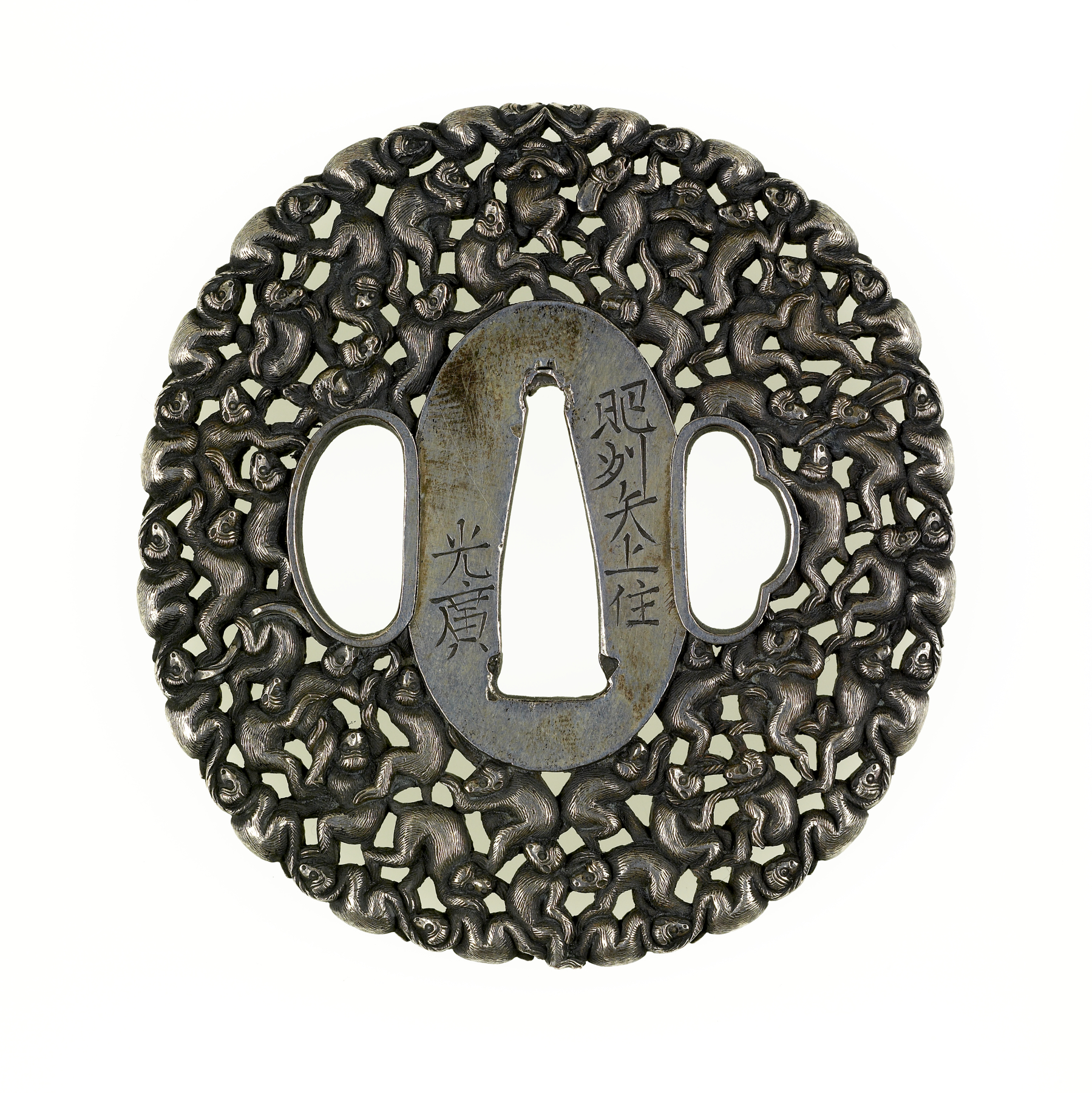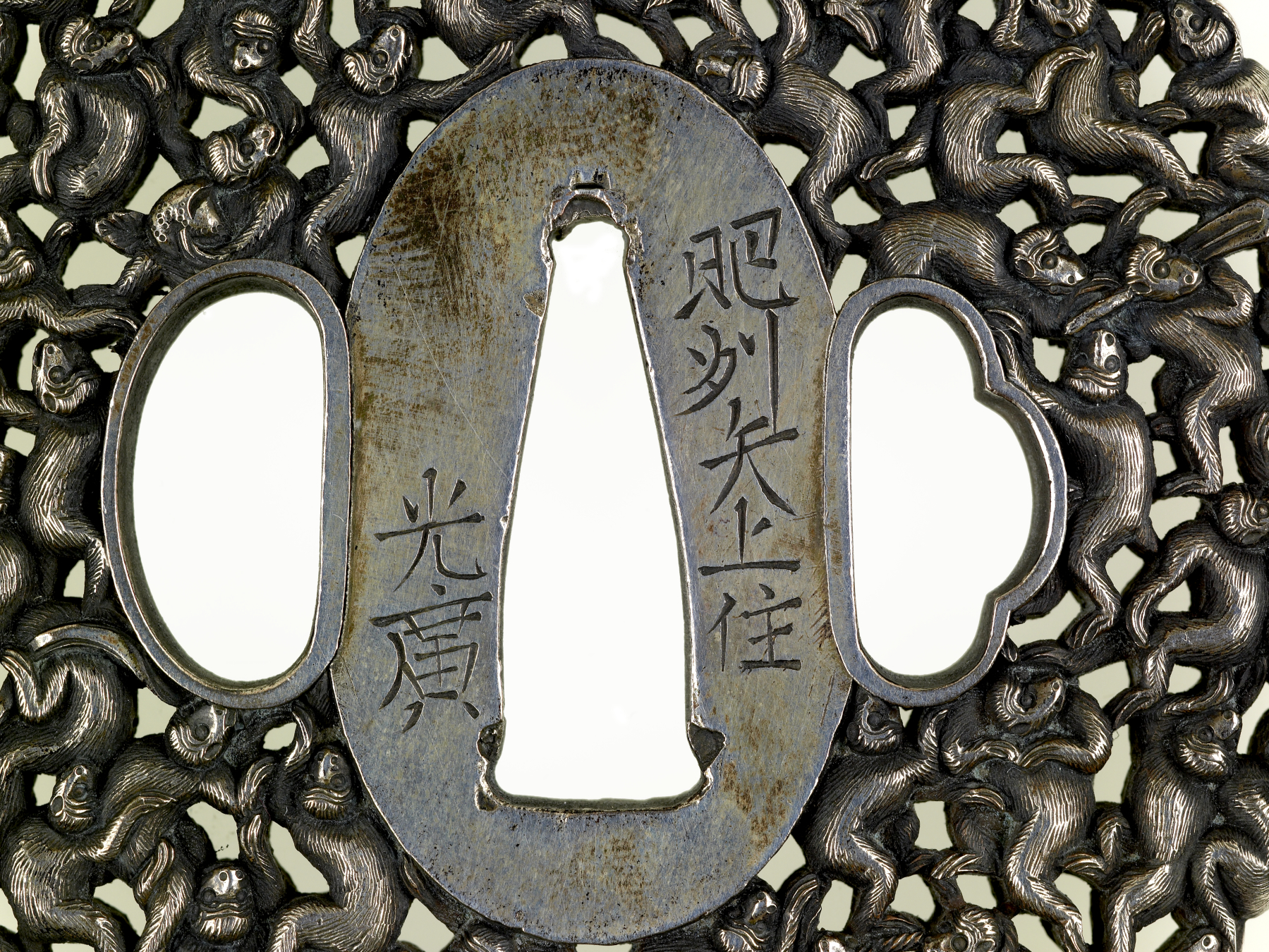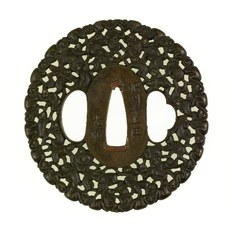Tsuba with One Hundred Monkeys
(Japanese Military Armor)
One hundred monkeys was a typical motif for Mitsuhiro and other members of his school. A multitude of monkeys are carved into the body of the tsuba. Their eyes are highlighted in gold. Hidden throughout the design are monkeys with special characteristics. In the upper portion are the three monkeys who see no evil, hear no evil, and speak no evil. At the lower right, two monkeys are neck-wrestling with a rope tied around their necks. In the upper left section, a monkey holds a giant peach. At the lower left, a monkey has a bag over its shoulder. In the upper right is a monkey carrying fan or a baton. This tsuba is similar to another in the Walters collection by the same artist made of copper (51.112). Other known examples by Mitsuhiro are almost all in the same style with a single motif carved throughout the tsuba.
Inscription
Provenance
Provenance (from the French provenir, 'to come from/forth') is the chronology of the ownership, custody, or location of a historical object. Learn more about provenance at the Walters.
Henry Walters, Baltimore [date and mode of acquisition unknown]; Walters Art Museum, 1931, by bequest.
Conservation
| Date | Description | Narrative |
|---|---|---|
| 9/15/1976 | Examination | examined for exhibition |
Geographies
Japan, Tokyo (Edo)
(Place of Origin)
Japan, Yagami (Place of Origin)
Measurements
2 7/8 x 2 11/16 x 3/16 in. (7.25 x 6.88 x 0.52 cm)
Credit Line
Acquired by Henry Walters
Location in Museum
Not on view
Accession Number
In libraries, galleries, museums, and archives, an accession number is a unique identifier assigned to each object in the collection.
In libraries, galleries, museums, and archives, an accession number is a unique identifier assigned to each object in the collection.
51.133







